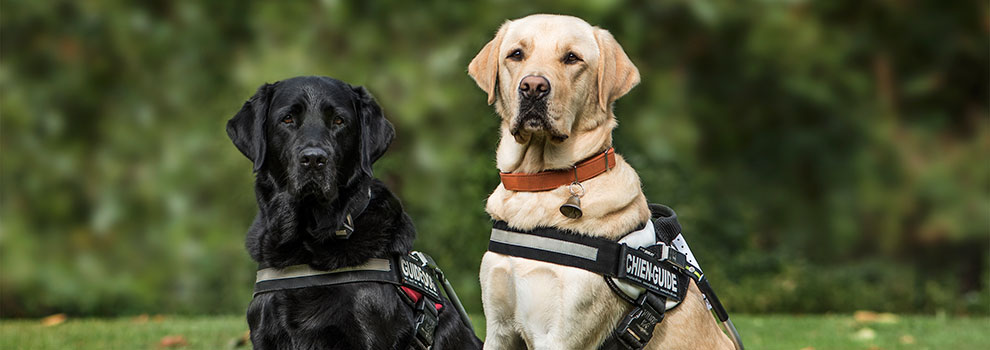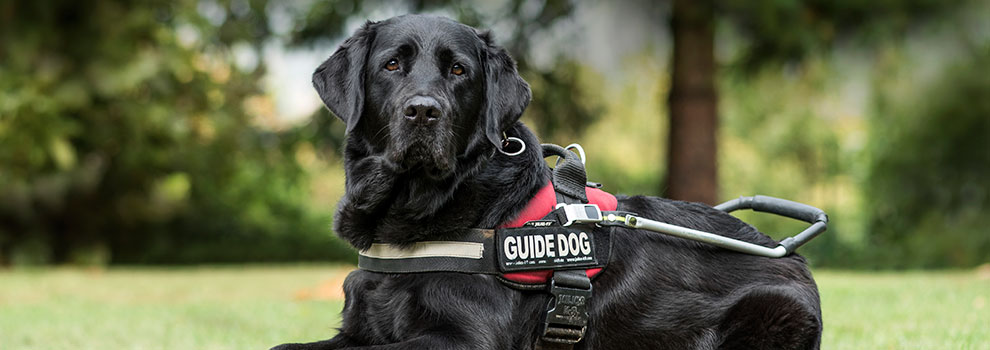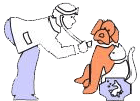Are you physically challenged and in need of help to carry out your day to day activities? Or do you know of someone who can’t get past the day without asking for favors? A service animal is any dog that is specially trained to assist individuals with disabilities (physical or mental) in their daily life. For instance, a service animal can help pull someone’s wheelchair or assist the blind with navigation. In some cases, miniature horses also qualify as service animals.
Types of Service Animals

Let’s briefly understand some popular types of service animals:
Guide Dogs – A Guide dog is usually paired with a visually impaired individual. The animal’s primary objective is to help with navigation. All guide dogs wear a U-shaped harness that allows patients to control them.
Emotional Support Animals – An animal that is trained to provide emotional stability and comfort to patients falls under the emotional support category. They are usually very reliable, friendly, and loving.
Therapy Animals – Much like the emotional support service animals, therapy animals help patients cope with recent painful surgery or a passing illness. The idea is to provide a supportive companion and a positive environment for people to speed up their recovery process.
Hearing Dogs – People who are ear impaired or deaf find it extremely hard to attend to phone calls or a knock at the door. Hearing dogs are trained to alert these individuals of such events in their day to day lives by physically touching them.
Laws, Rules, and Regulations

Under current laws, the ADA does not make it mandatory for people to register their service animals. However, since every state and city has its own set of regulations, it would be wise to go through the process. Here are some useful pointers:
Certification
There are numerous organizations that provide free service dog certifications. There are no special requirements – a service dog must assist an individual with his or her disability. Once a dog is registered with an organization, it will be listed in their directory or database and certified as a service animal. Only specific types are able to be ADA certified while others cannot.
Identification
Every service animal has an identification number. Although people are not directed to compulsorily produce the ID number by law, business owners and staff in private establishments have a right to seek such information. In such cases, people who employ service animals may provide the ID number to avoid hassles.
Types of Training for Service Animals

Service animals are distinct from pets. Their training sets them apart from their peers. If owners find it too hard to train the animal on their own, they can hire professional training schools to do the job for them.
Seeing Eye Dog – Seeing eye dogs are basically guide dogs. They are initially trained to obey basic commands such as “sit” or “come”. Once that is achieved, guide dogs learn to walk in tandem with their owner and help them avoid obstacles.
Diabetes – Dogs have the uncanny ability to gauge blood sugar levels only by sniffing body scents. A lower blood sugar level will give out a scent that is distinct from that of a higher blood sugar level. The dog will be trained to identify, recognize these scents, and alert the handler.
PTSD – PTSD service dogs are trained to provide a sense of comfort and security to their owners. These dogs will be especially good at retrieving objects, medications, or even signal erratic behavior.
Depression – People who suffer from depression are the most extensive users of service animals. Dogs that assist with depression are trained to be completely nonaggressive and friendly. They are predictable, trustworthy, and will always respond to the handler’s call.
How to Act Around Service Animals?

There are 400,000 service dogs in the US alone. There’s every chance that you might have to communicate with someone is assisted by a service dog sooner or later. Here are some things to keep in mind:
- Never approach the dog directly, speak to the handler first.
- Don’t make gestures, noises or whistles near the dog, this may distract the animal.
- Don’t offer treats or any other food substance to the dog.
- Always ask the handler if he or she needs help with something before grabbing the leash or the harness.
Where Are Service Animals Allowed?
Service animals are allowed in all public areas by law. There are no restrictions. However, some establishments may ask for identification. But once the ID has been provided, no authority has the power to restrict access to the animal.
 All About Pets
All About Pets 

